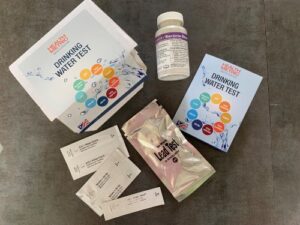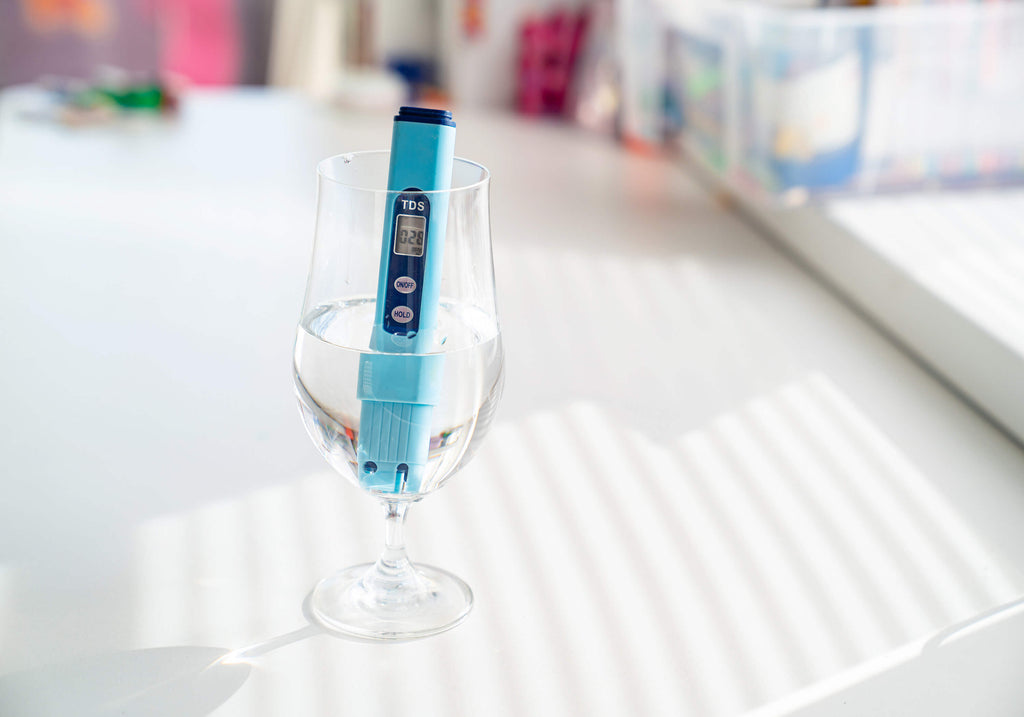3 Simple Techniques For Well Water Testing
Table of ContentsThe Facts About Well Water Testing UncoveredHow Well Water Testing can Save You Time, Stress, and Money.Well Water Testing Fundamentals ExplainedThe Main Principles Of Well Water Testing

Government firms do not keep an eye on or control water top quality in personal wells, and water testing is not called for by any type of federal or state law. If you are among the 1. 7 million Georgians with a private well, you are liable for the high quality and safety of your well water.
Effectively built and maintained water wells can supply numerous years of hassle-free service. However, surface area contaminants might enter the well if it is not effectively built and kept, and the well may at some point degrade or become damaged as it grows older - Well Water Testing. Furthermore, some groundwater naturally has one or more chemical compounds at degrees above the EPA's health-based requirements, called the Maximum Contaminant Degrees (MCLs)
Evaluate the water once each year for complete coliform bacteria, nitrates, total liquified solids and p, H levels. If you presume various other contaminants, you ought to check for those too. On the other hand, the top quality of water in malfunctioning wells may change unexpectedly and continue to be undetected as the water may look, smell and taste the exact same.
7 Easy Facts About Well Water Testing Described
Minimum Screening Recommendations Well, Upkeep Annual All geographical regions Nitrates (Complete Nitrate and Nitrate+Nitrite) Yearly Annual Basic Water Chemistry (see listed below) plus Alkalinity, Soluble Salts (or Overall Dissolved Solids), Nitrate, Chloride, Fluoride and Sulfate At First and afterwards every 3 years p, H, Solidity, Light Weight Aluminum Calcium, Chromium, Copper, Iron, Magnesium, Manganese and Zinc Yearly after initialcomprehensive water chemistry Additional Examining Suggestions Verification of Potential Contamination At the very least when and after that annual follow-up for:1) houses with pipes that pre dates the 1987 plumbing codes with copper piping with lead solders2) older residences in which there are lead pipes3) homes with brass and/or chrome fixtures (brass consists of 3-8% lead; chrome components consists of lead) All geographicalregions At least as soon as and then a yearly follow-up Southern Coastal Level region listed below the "Fall Line" on the, Georgia map A minimum of once and afterwards a yearly follow-up Piedmont-Blue Ridge areas above the "Loss Line" on the Georgia map Volatile and Semi-volatile Organic Compounds, Chemicals, Petroleum Hydrocarbons visit here and Various other Organics Not required on a normal interval; advised only when contamination is believed. Well Water Testing.
Samples accumulated from a kitchen area tap would show the source water homes plus any prospective contamination from the well owner's water system system. Tasting at the wellhead for lead is not essential, but tasting from the tap for lead would suggest if lead solder was made use of in the pipes.

The primary MCLs have actually been established at concentrations that provide a vast margin of defense from dangerous health and wellness effects for the majority of people over a lifetime of alcohol consumption. Although key MCLs are enforceable requirements for PWSs only, exclusive well owners might select to follow these criteria to safeguard themselves from the potential health and wellness risk of alcohol consumption contaminated water.
Get This Report on Well Water Testing
The drinking water standard for nitrate is 10 ppm; above this degree nitrate can have adverse results on human health, specifically infants under the age of six months. Pesticides are compounds made use of to protect against, destroy, fend off, or alleviate bugs.
Cyanazine breaks down in the setting right into various chemicals. Several of the breakdown products of cyanazine have been spotted in Minnesota water. Pesticide analysis in water samples can be costly and using particular pesticides can vary throughout the state making it challenging to know which pesticide to evaluate.
Based on this, we recommend that you contact the MDA prior to tasting your well for chemicals. The collective or worsening wellness danger connected with low levels of multiple pesticides in alcohol consumption water is not well recognized at this time. Well Water Testing. As a whole, vulnerable populations such as infants, kids, and pregnant/nursing ladies are at greatest risk
We are presently tasting wells for nitrate in territories with at risk groundwater which have considerable row crop manufacturing for nitrate as component of the Area Testing Program (TTP). More than 70,000 exclusive wells proprietors will be offered nitrate screening in over 300 areas. Property owners are offered a chemical examination through Source the Private Well Chemical Sampling (PWPS) Project if nitrate is identified in their initial area testing example.
The Ultimate Guide To Well Water Testing
The MDH recommends utilizing an approved lab to examine your water. To identify a lab to have your well water examined, go to Minnesota Department of Wellness (MDH) Certified Environmental Laboratories. The personalized search tab on this web page allows you to look for a research laboratory that accepts samples from exclusive homeowners.
When possible, it is best to eliminate resources of contamination or change a contaminated supply of water with useful site a more secure water as opposed to rely on a home water treatment system. The cost to test for pesticides in water may surpass the expense of a point-of-use home treatment system, such as reverse osmosis for drinking water.
If you make a decision to set up a home water therapy system, the device (or devices) you pick need to be licensed and classified to lower or get rid of the material you are worried concerning. If there is greater than one compound you desire eliminated from your water, you may need to combine several therapy procedures right into one system.